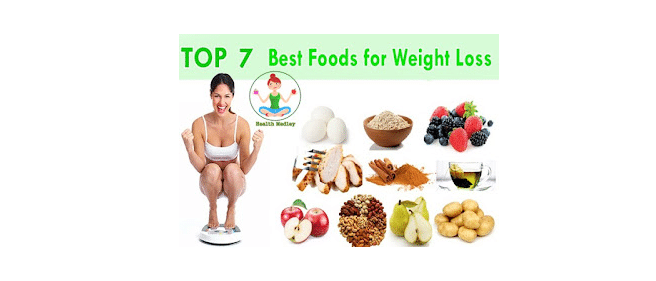9 High Protein Vegetables That Will Fill You Up Fast
9 High-Protein Vegetables That Will Fill You Up Fast – Popeye is famous for flaunting his gigantic biceps. His mystery? Spinach. Be that as it may, that isn’t your only ticket to the weapon’s appearance.
As indicated by Rosanne Rust, numerous vegetables provide you with grams of protein per container, whether raw or cooked. (So anything with at least two grams for every serving can be viewed as a high-protein vegetable.)
It sounds disappointing when you contrast it with, say, the 31g of protein in a chicken breast. Yet, the small amounts of protein in vegetables can contribute significantly to your daily allowance if you consume the recommended five to 10 servings per day.
Be that as it may, there is a catch. “Plant proteins are ‘fragmented’ proteins, which means they aren’t comprised of all the basic amino acids,” Rust says. She says it’s essential to make a point to “eat the rainbow” of veggies and grains to guarantee you’re getting an assortment of amino acids. (Interpretation: Don’t simply eat huge amounts of broccoli and consider it daily.)
On your next grocery store run, examine the creative path for these fit, green muscle machines.
1. Peas
These pea-sized jewels pack something else under the surface of the eye. “Peas are stacked with vitamin A, a decent wellspring of potassium and fiber, and 4g of protein for every half container,” says Rust. “Steam them and prepare them into pasta, rice, or servings of mixed greens.”
Per 1/2-glass serving: 246kJ, 0.3g fat (0g immersed), 10g carbs, 4g sugar, 4mg sodium, 4g fiber, 4g protein
2. Spinach
Stacked with vitamin C, folic corrosive, and other B vitamins, spinach gives a considerable amount of protein when cooked, says Rust.
Per 1/2-container serving: 87kJ, 0g fat (0g immersed), 3g carbs, 0g sugar, 63mg sodium, 2g fiber, 3g protein
3. Prepared potato
You’ll toss laud hands emoticons up at Mother Nature for this one: A medium-sized heated potato contains 3g of protein, huge amounts of vitamin C, potassium, and some filling fiber, says Rust.
Per medium potato: 606kJ, 0g fat (0g immersed), 34g carbs, 3g sugar, 8mg sodium, 2g fiber, 3g protein
4. Broccoli
Your folks were onto something when they constrained you to eat your broccoli as a child. Presently, you’ll need everything all alone – Rust says this cruciferous veggie isn’t just pressed with fundamental supplements, fiber, and protein, it’s likewise awesome for keeping up legitimate gut wellbeing.
Per 1-container serving: 129kJ, 0.3g fat (0g immersed), 6g carbs, 2g sugar, 30mg sodium, 2g fiber, 3g protein
5. Brussels grows
These little green folks used to get unfavorable criticism; however, now they’re springing up on gourmet menus all over. Like broccoli, Rust says these cruciferous veggies are an extraordinary source of potassium, vitamin A, vitamin K, and fiber. Take her basic grow tip: Halve them, put them on a preparing sheet, shower with olive oil, include a touch of salt, and bake them for 25 to 35 minutes at 180 degrees, flipping once part of the way through.
Per 1/2-container serving: 117kJ, 4g fat (0g immersed), 6g carbs, 1g sugar, 16mg sodium, 2g fiber, 2g protein.
6. Broccoli rabe
Rust predicts this verdant green with broccoli-like buds (otherwise called “rapini”) will be the following “it” vegetable, and in light of current circumstances, It flaunts an astounding measure of protein, vitamin A, and vitamin K.
Per 85 g serving: 87kJ, 0g fat (0g soaked), 3g carbs, 1g sugar, 48mg sodium, 2 g fiber, 3g protein
7. Corn
While field corn (encouraged to be domesticated animals) is viewed as a grain, the sweet corn we appreciate on the braai, drenched in margarine, is viewed as a vegetable, says Rust. Furthermore, a shockingly protein-stacked one, at that.
Per medium ear: 368kJ, 1.4g fat (0g soaked), 19g carbs, 6g sugar, 15mg sodium, 2g fiber, 3g protein.
8. Portobello mushrooms
This growth is stuffed with nearly as much protein as an egg. Rust says it’s likewise high in fiber and stacked with cell reinforcements. “You can flame broil, cleave, and sauté them utilizing olive oil and a shower of balsamic vinegar toward the end of cooking. You can likewise add them to a vegetable stick to help the protein,” Rust says.
Per 1-container serving: 146kJ, 1g fat (0g soaked), 5g carbs, 3g sugar, 13mg sodium, 2.7g fiber, 4g protein
9. Lima beans
The mix of high fiber and high protein makes these vegetables (for this situation, a veggie, as well, says Rust) a satisfying supplement-filled powerhouse. To make a sound hand-crafted plunge, Rust says to cook them in bubbling water for 10 minutes, deplete and cool them, and at that point exchange them to a food processor, including a clove of garlic, a tablespoon of lemon juice, two teaspoons of cumin, and a pinch of salt. Mix until the point when smooth and present with crude veggies or pita chips.
Per 1/2-glass serving: 439kJ, 0g fat (0g immersed), 20g carbs, 1g sugar, 13mg sodium, 5g fiber, 6g protein
Conclusion
Incorporating high-protein vegetables into your diet is an excellent strategy for anyone looking to feel full and stay energized. These plant-based powerhouses, such as lentils, chickpeas, and edamame, are not only rich in protein but also packed with fiber, which slows down digestion and promotes a feeling of satiety. By making them a central part of your meals, you can manage your appetite, support muscle health, and enjoy a sustainable, nutrient-rich approach to eating.
FAQ: High-Protein Vegetables That Will Fill You Up Fast
1. What are high-protein vegetables?
High-protein vegetables are plant-based foods that contain significant amounts of protein, making them excellent choices for those seeking to increase their protein intake.
2. Why should I include high-protein vegetables in my diet?
Including high-protein vegetables can help you feel fuller for longer, support muscle maintenance, and provide essential vitamins and minerals without excessive calories.
3. Which vegetables are high in protein?
Some high-protein vegetables include:
- Edamame
- Spinach
- Kale
- Broccoli
- Green peas
- Brussels sprouts
- Artichokes
- Asparagus
- Mushrooms
4. How much protein do these vegetables provide?
Protein content varies, but here are approximate values:
- Edamame: 17g per cup
- Spinach: 5g per cooked cup
- Kale: 4g per cooked cup
- Broccoli: 4g per cooked cup
- Green peas: 9g per cooked cup
- Brussels sprouts: 4g per cooked cup
- Artichokes: 4g per medium artichoke
- Asparagus: 4g per cooked cup
- Mushrooms: About 3g per cooked cup
5. How can I prepare these vegetables to maximize their protein content?
You can steam, sauté, or roast these vegetables to enhance their flavor and maintain their nutritional value. Avoid overcooking to preserve protein and nutrients.
6. Are these vegetables suitable for vegan diets?
Yes, all of these high-protein vegetables are plant-based and perfect for vegans and vegetarians.
7. How can I incorporate high-protein vegetables into my meals?
You can add them to salads, stir-fries, soups, and smoothies, or enjoy them as snacks. They are versatile and can enhance a variety of dishes.
8. Do high-protein vegetables provide other health benefits?
Yes! Besides being high in protein, these vegetables are rich in fiber, vitamins, minerals, and antioxidants, promoting overall health.
9. Can high-protein vegetables replace meat in my diet?
They can significantly contribute to your protein intake, but it’s best to combine them with other protein sources like legumes, nuts, and grains to meet your overall nutritional needs.



